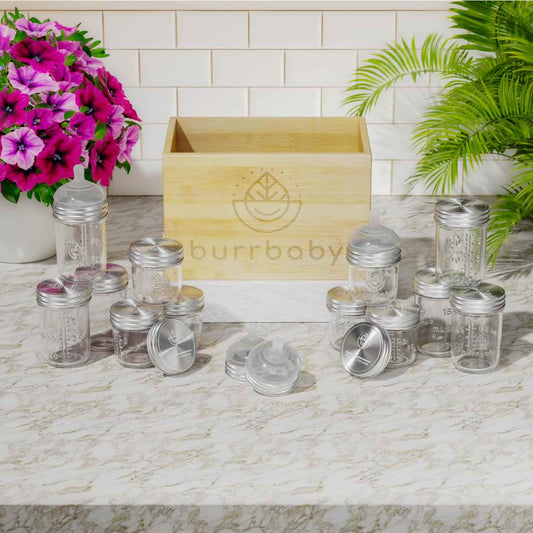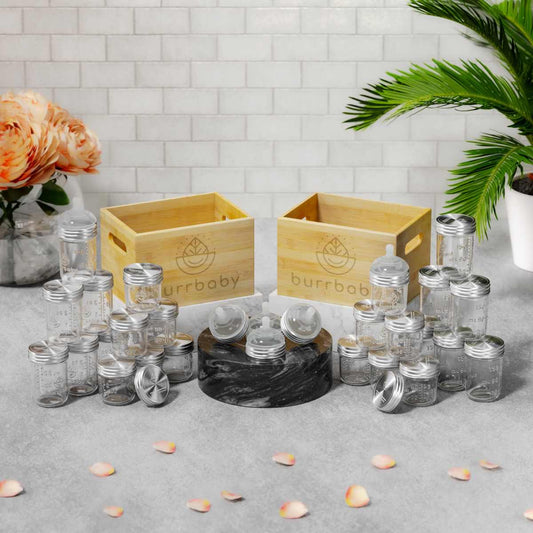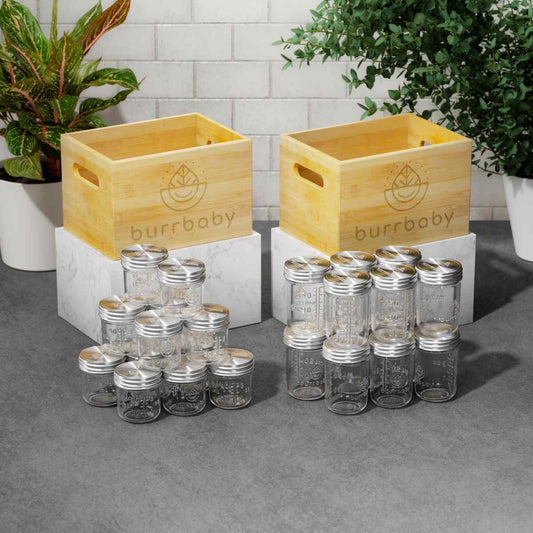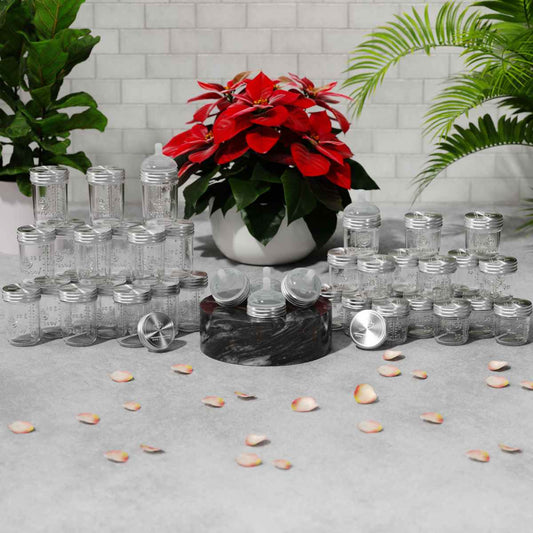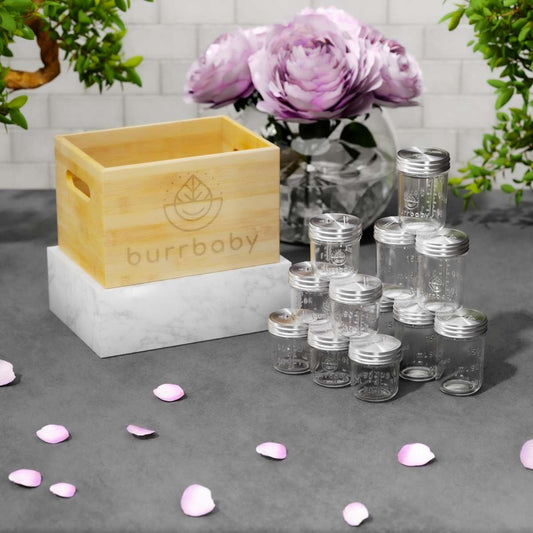As parents, our top priority is doing everything we can to protect the health and well-being of our children. A rising concern that's captured the attention of scientists worldwide is the increasing presence and exposure to microplastics in the food we eat and the water we drink.
Unfortunately, a recent study showed that our babies are not protected from this either, with a large amount coming from plastic breast milk storage bags. So, what are microplastics, and why should we, as parents, be concerned?
Microplastics: An Invisible Hazard
Microplastics are tiny particles, typically smaller than 5mm, that shed from larger plastic items as they degrade.

Their small size makes them incredibly pervasive. They can travel via air, water and even infiltrate our food chain. Alarmingly, microplastics have been found in everyday items such as water bottles, cosmetics, and, as recent investigations on plastic revealed, even in breastmilk storage bags.
In the case of plastic breast milk storage bags, your milk sits in plastic, and it appears the plastic sheds these tiny particles into the milk over time. This has the potential to cause issues down the road. Many don't know that plastic breast milk storage bags are not made of "baby safe" plastic; they use the same plastic as cheap sandwich and snack bags.
Microplastics and Health: What's the Risk?
The health implications of microplastics are yet to be fully understood. However, research suggests they could potentially act as carriers for contaminants and increase our exposure to harmful chemicals. The main concern is that when we ingest microplastics, either directly or indirectly, they might release these chemicals into our bodies.
Research has shown that plastic particles can release toxic substances known as endocrine disruptors that can interfere with our hormones. Initial studies on human cells show that microplastics cause cytotoxicity (essentially widespread harm to cells) and increase inflammatory markers, which can cause different types of chronic disease.
Unseen Exposure: The Microplastic Problem in Breastmilk Storage Bags
As mothers, we strive to ensure our babies get their vital nutrients directly from us through our breast milk, especially in the early months. However, the convenience of using plastic breast milk storage bags for storing and freezing our precious milk might come at a cost.
Microplastic Detection from Six Plastic Breast Milk Storage Brands
A recent study titled "Release of microplastics from breastmilk storage bags and assessment of intake by infants: A preliminary study" took a close look at six different brands of breastmilk storage bags, analyzing how microplastics and other particles were released during their simulated use.
Using micro-Raman spectroscopy, researchers could identify the types of plastics involved, such as PE (Polyethylene), PET (Polyethylene Terephthalate), and nylon-6.
Babies could be Exposed to Varying Quantities and Sizes of Microplastics From Milk Storage Bags

Particle Sizes and Shapes: The particles released ranged in size from submicron levels (0.1 to 0.6 μm) up to 300 μm. These particles were found in various shapes, including irregular spherical or oval forms.
Quantities Released: The average weight of the particles released from three selected bags from the same product package was 0.32 mg. The quantities varied across brands, but all released microplastics throughout the tests.
Infant Exposure: Based on these findings, the study estimates that infants could be exposed to 0.61 to 0.89 mg of microplastics per day if fed exclusively with breastmilk stored in commercial plastic bags.
Health Implications: The study alludes to the broader concern about microplastics' adverse health effects, though specific long-term health impacts on infants remain largely unknown.
Context and Implications
The release of microplastics from breastmilk storage bags ties into a more significant issue of infant exposure to microplastics. Other studies have shown that infants can ingest microplastics through various sources, such as baby bottles and even in foods contained in plastic packaging.
To read more about switching from plastic breast milk storage bags to glass, head here.
These microplastics have been found in human tissues, such as the placenta, and can even affect the gut microbiome of infants. As we outlined above, there may be other negative consequences to microplastics as well.
The study highlights a significant but underexplored risk to infants through plastic breast milk storage bags. With the prevalent use of these bags and the emerging understanding of the potential health risks associated with microplastics, the study makes a strong case for further research and possibly seeking safer alternatives for breastmilk storage.
The findings can be seen as a call to action for both parents and brands to reconsider the materials used in infant products. It aligns with a growing concern about plastics' broader environmental and health impact, especially for vulnerable populations like infants.
By shedding light on this specific source of microplastic exposure, the study adds to the growing body of evidence that supports a more health-conscious and eco-friendly approach to infant care.
Introducing Burrbaby: A Healthier Choice for Breastmilk Storage
As we navigate this uncomfortable conversation about microplastics and their presence in our baby's lives, it's important to know about viable alternatives, especially those that go above and beyond in offering practical solutions. This is why we started Burrbaby, to keep our baby and yours safe and healthy.
Burrbaby was born out of a failed search for a convenient, cost-effective, and plastic-free solution for storing and feeding breastmilk. Like many parents, we, as founders, recognized the need for a safer, more eco-friendly choice. We proudly offer high-quality glass products designed with babies' health first.
Check out Burrbaby's glass breast milk storage and bottle bundles here.

Our unique design allows the containers to transition quickly from storage jars to feeding bottles with the help of premium stainless-steel lids with a silicone seal. Unlike plastic options, these lids prevent all releases of microplastics and are much more durable. To make organization simpler, Burrbaby offers an FSC-certified bamboo storage box for secure and efficient organization.
Explore all of Burrbaby's non-toxic glass breast milk storage and bottle options.
Burrbaby does more than replace plastic with glass. We emphasize convenience, quality, sustainability, and cost-effectiveness wrapped in one product. Choosing Burrbaby is not only a decision for health and safety but also a sustainable choice that can have a long-lasting positive impact on our planet.
Conclusion
In our quest to keep our children safe, we often find ourselves navigating through an endless sea of information. Discovering that plastic breastmilk storage bags may release microplastics, and understanding the potential risks involved, might feel overwhelming. But armed with knowledge and having access to better alternatives, we can make better decisions that prioritize the health of our little ones.
Switching to glass containers, such as those offered by Burrbaby, allows us to avoid the risk of microplastics contaminating the breastmilk we store for our babies. This reduces our children's potential exposure to harmful particles and significantly lessens our environmental footprint.
The study about microplastics in breast milk storage bags has highlighted a previously overlooked issue. As the conversation about microplastics evolves, we encourage parents to stay informed and explore safer, more sustainable alternatives for their children's and the planet's well-being. Remember, our choices today significantly shape our children's tomorrow.
References:



